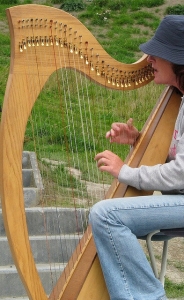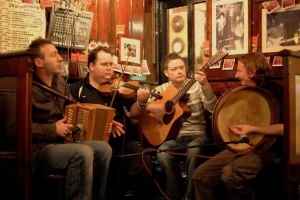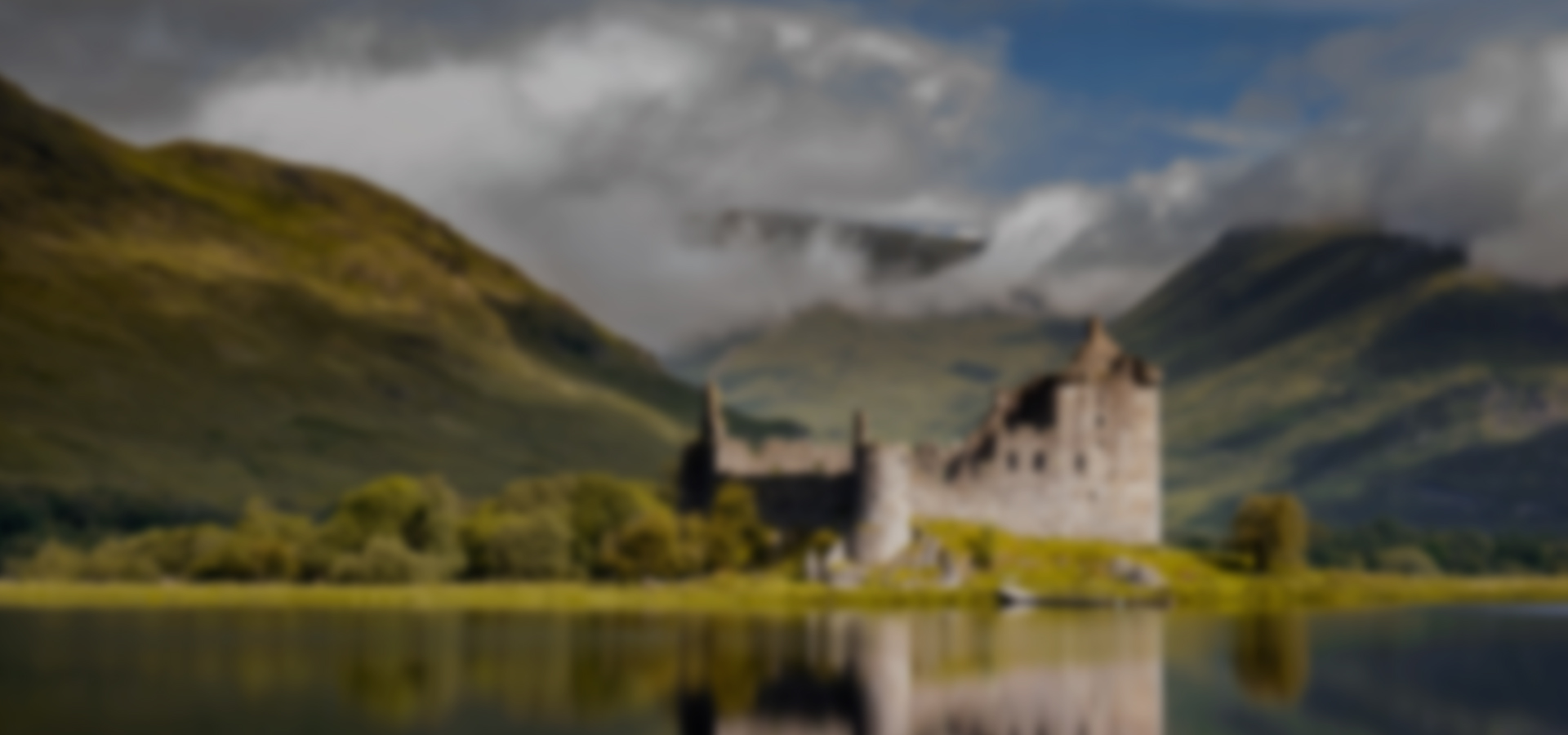We all know the harp is a famous Irish symbol . But do we know its Irish music roots? Let’s take a look at a few of the main instruments used in Irish music (and make sure to see some traditional musicians on your next trip to Ireland!)

Harp
This ancient instrument has been part of Irish culture for over 1,000 years. Irish harpists are among some of the best, thanks to their long history. Take note, however, that in traditional Irish music, the harp would have included wire strings.
Around the turn of the 19th century, these were swapped out for gut strings. Why does it matter? The two produce completely different sounds, so modern harps sound nothing like their predecessors.
Bag pipes / Uilleann
You’ve all heard the loud moan of bag pipes. This vital part of Irish music was actually used for troops marching into war — and they were loud. Eventually, in the 16th century, they were replaced by the uilleann, a smaller instrument that can play in two octaves. Unlike bag pipes, the uilleann bag is not inflated with the breath of the user. Instead, a bellows under the opposing arm provides air.
Fiddle
What’s the difference between a fiddle and a violin? The strings and how it’s played. That’s it. While traditionally bows were made of horse hair and strings of cat intestine (sorry, that’s a gross thought), Irish music today is fostered by steel or nylon strings. The fiddle became prevalent in the 17th century and has been a permanent fixture in Irish music since.
Flute
The modern flute, credited to Theobald Boehm, uses a steel tube with padded finger holes. For Irish folk music, however, expect to see a wooden flute with six finger holes being played. Musicians who choose the wooden version prefer its earthy tones to the modern steel version.
Whistle
Called a “penny whistle” this cheap tin instrument is widely used in most Irish music. It’s most often lauded because it is, in fact, so easy to make. Before they were tin, the six holed, tapered tube was actually made of bone, which seems like a lot more work than making it out of tin…
Frame Drum
Goat skin stretched over a wooden frame comprised the traditional version of the bodhran drum. The tone of the drum was dictated by its size and tightness of the hide stretching. It is played by holding it in one hand and banging the head of the drum with a wooden rod.
Bones
While many modern musicians tap the floor with their boot, you might find spoons or bones played to add a beat to the music too. Traditionally, sheep bones were the most popular in Irish music. They were held between the fingers and snapped together (same for spoons.)
Concertina
Believe it or not, this was a trendy instrument up until 1844. As a predecessor to the harmonica, it then faded into the Irish music genre of ‘folk’ never to be heard on concert stages again. You might also hear an accordion, in the same family, played in Irish music.
As you listen to your favorite Irish music, try to imagine a time when instruments were all hand made. Then, imagine having no TV or electronic devices to keep you busy. You’d simply grab your favorite instrument and play.

Irish music is still all about bringing everyone together to laugh, love and enjoy the company of their rich culture. On your tour of Ireland, it’s our sincere hope you can do the same.
Editor’s Note: While you may see guitars, banjos or other instruments (the bass, cello, etc.) in bands like the one above, these weren’t traditional Irish instruments. Irish music, unlike some classic pieces, is a living art that continues to grow, so just keep in mind this blog only refers to instruments common before the 19th century.

How We Travel
Learn MoreMore Articles
Why Halloween in Ireland is a Must-Visit: Explore the Origins of Samhain and Spooky Traditions
Ireland, often recognized for its vibrant landscapes, ancient castles, beer history, and longstanding heritage, offers a unique experience unlike any other during Halloween. Rooted in the ancient Celtic festival of Samhain, Ireland’s Halloween celebrations are deeply traditional, atmospheric, even immersive. Here’s why you should consider visiting Ireland for Halloween.
Your Guide to Visiting Bridgerton Filming Locations
Dearest gentle reader, Bridgerton’s fairytale world is closer than you think! Explore the real-life filming locations from the hit show on your next trip to the United Kingdom. From London’s grand Regency estates to Bath’s stunning assembly rooms, we’ll give you the inside scoop of what to see—better yet, we’ll do all the planning, so you don’t have to.

By-Your-Side Service℠
Our personal concierge service and mobile app

Custom Europe Experts
Experts in planning truly customized trips

Value without Compromise
High-touch inclusions and customized experiences

Consistency with Individuality
You’ll always be met with the highest standards










